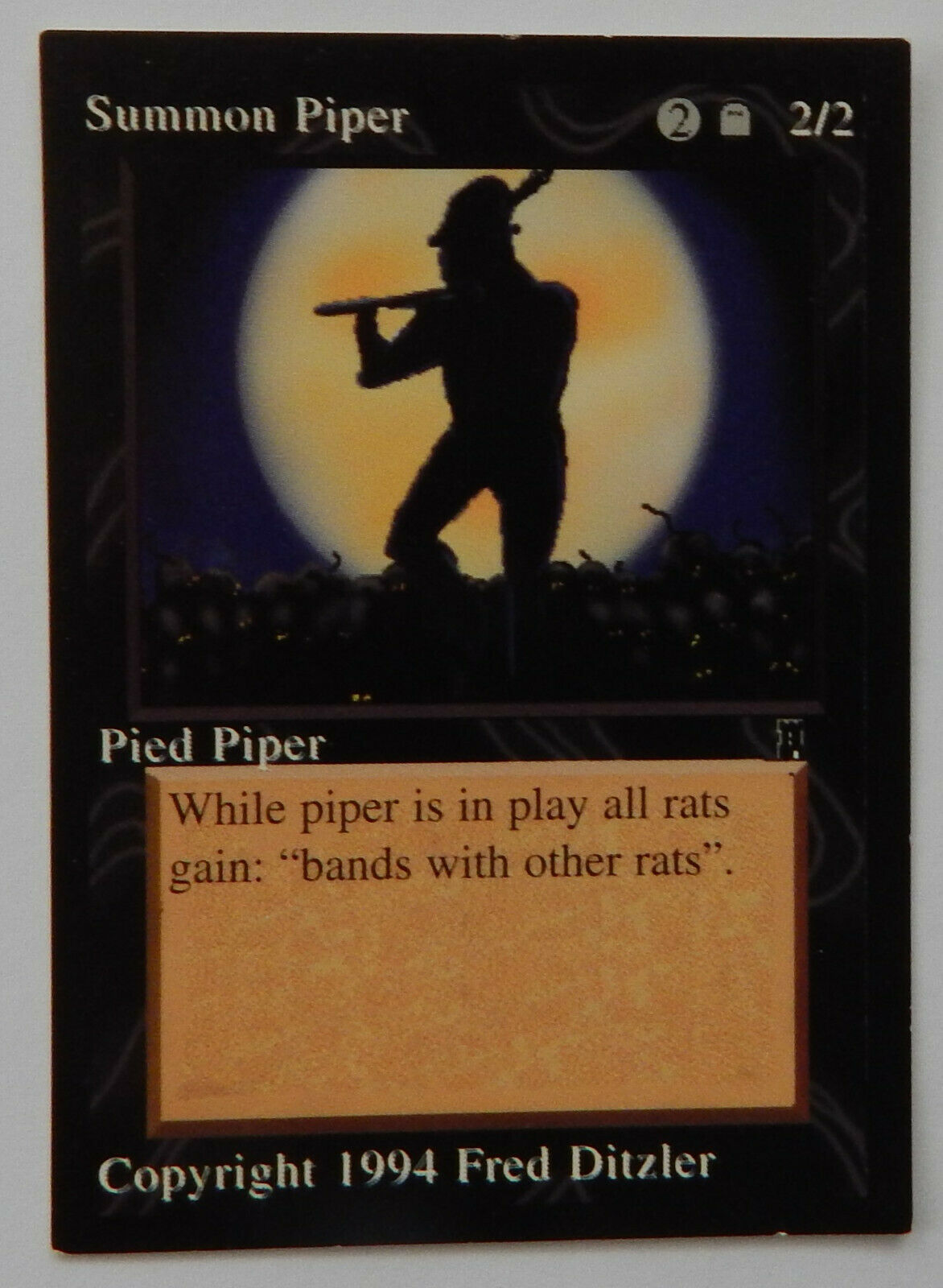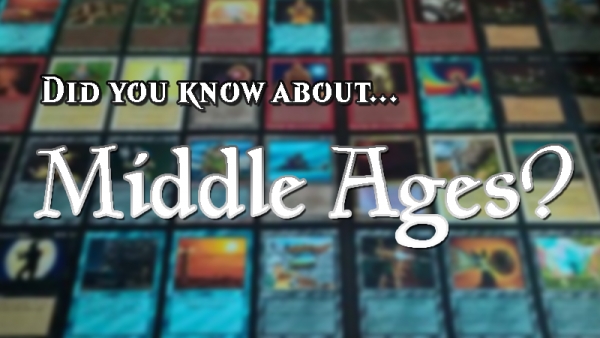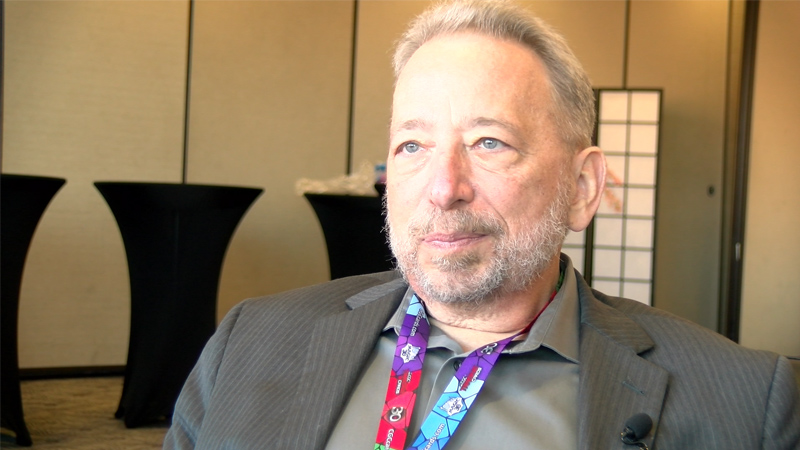Back in the early days of Magic: The Gathering, third parties ran wild with the instantly-popular collectible card game.
Back in the early days of Magic: The Gathering, third parties ran wild with the instantly-popular collectible card game. Magic was a hot new card game and everyone from binder makers to card sleeve manufacturers put out whatever they could in order to capitalize on the game. Even the first physical MTG tokens were made by a third party. And, for a while in the mid-90s, there was even an unofficial fan-made expansion that employed the use of peelable stickers.
The concept is easy: Redesign the front of a Magic card to put in your own stats and info (creature, spell, mana cost, etc. -- albeit in different locations), then print it out on a sticker at the same dimensions of a card, and BOOM - new card.
 In the summer of 1994, stores in four states - Pennsylvania, Delaware, New Jersey, and Michigan - started receiving an unofficial Magic offshoot sticker known as Middle Ages. Created by Fred Ditzler of Lancaster, Pennsylvania, Middle Ages essentially served as an unofficial Magic expansion with more than 70 stickers coming out and touching on many general fantasy elements such as dragons and elves, while also delving into Egyptian and other cultural themes, doing just what any Magic expansion did by expanding on the original core game.
In the summer of 1994, stores in four states - Pennsylvania, Delaware, New Jersey, and Michigan - started receiving an unofficial Magic offshoot sticker known as Middle Ages. Created by Fred Ditzler of Lancaster, Pennsylvania, Middle Ages essentially served as an unofficial Magic expansion with more than 70 stickers coming out and touching on many general fantasy elements such as dragons and elves, while also delving into Egyptian and other cultural themes, doing just what any Magic expansion did by expanding on the original core game.
There was also a surprisingly large amount of detail in the cards, with mana (with altered symbols) costs being faithfully replicated and new artwork being supplied for each new card. The stickers themselves were 1mm longer both horizontally and vertically than an official Magic: The Gathering card, but scissors could quickly correct this at home. Booster packs actually had to have instructions telling people to do this (and even how to play).
For many, this wasn't seen as a quick cash grab or anything like that. Rather, it was considered by many as nothing more than a viable new way to play the game.
 Middle Ages turned out to be pretty popular in the few cities where it was available. In 1994, it seemed that people could not get enough Magic: The Gathering, and Middle Ages was another outlet for more cards. The entire print run of 90,000 stickers was sold and, soon thereafter, Ditzler was planning a second batch complete with corrections and new cards. Not bad for a college student who had other students working on the project with him including and packaging everything by hand as he ran the entire thing from his college campus in Pennsylvania.
Middle Ages turned out to be pretty popular in the few cities where it was available. In 1994, it seemed that people could not get enough Magic: The Gathering, and Middle Ages was another outlet for more cards. The entire print run of 90,000 stickers was sold and, soon thereafter, Ditzler was planning a second batch complete with corrections and new cards. Not bad for a college student who had other students working on the project with him including and packaging everything by hand as he ran the entire thing from his college campus in Pennsylvania.
It was a magical summer in 1994, but just like grunge rock and Nintendo's superiority in the console wars, things starting fading for Middle Ages off that autumn. In all reality, it was only a matter of time before Wizards of the Coast found out about it. When they did, the decision was quick and severe - stop it now or face the consequences.
In fact, Middle Ages didn't even make it through the summer as WotC sent in a cease-and-desist order only three weeks after they started shipping out the stickers. All of the new run stickers had to be immediately destroyed, and he could no  longer market or make Middle Ages stickers. While mana symbols had been changed and other cosmetic differences, it still went severely against copyrights held by WotC.
longer market or make Middle Ages stickers. While mana symbols had been changed and other cosmetic differences, it still went severely against copyrights held by WotC.
Rather than fight it out in the courts, Ditzler complied and that was that.
Today, Middle Ages cards can go for a fair amount on the resale market - they go for around $15-$25 each today with rarer ones going for even more. Today they are still remembered for being the first fan made cards to really make it to market, as well as for the quick shutdown by Wizards once they found out.
But still, for about a month in 1994, Magic: The Gathering had an unauthorized expansion that few bought and played, but still managed to cause some big waves for the game during its time.









